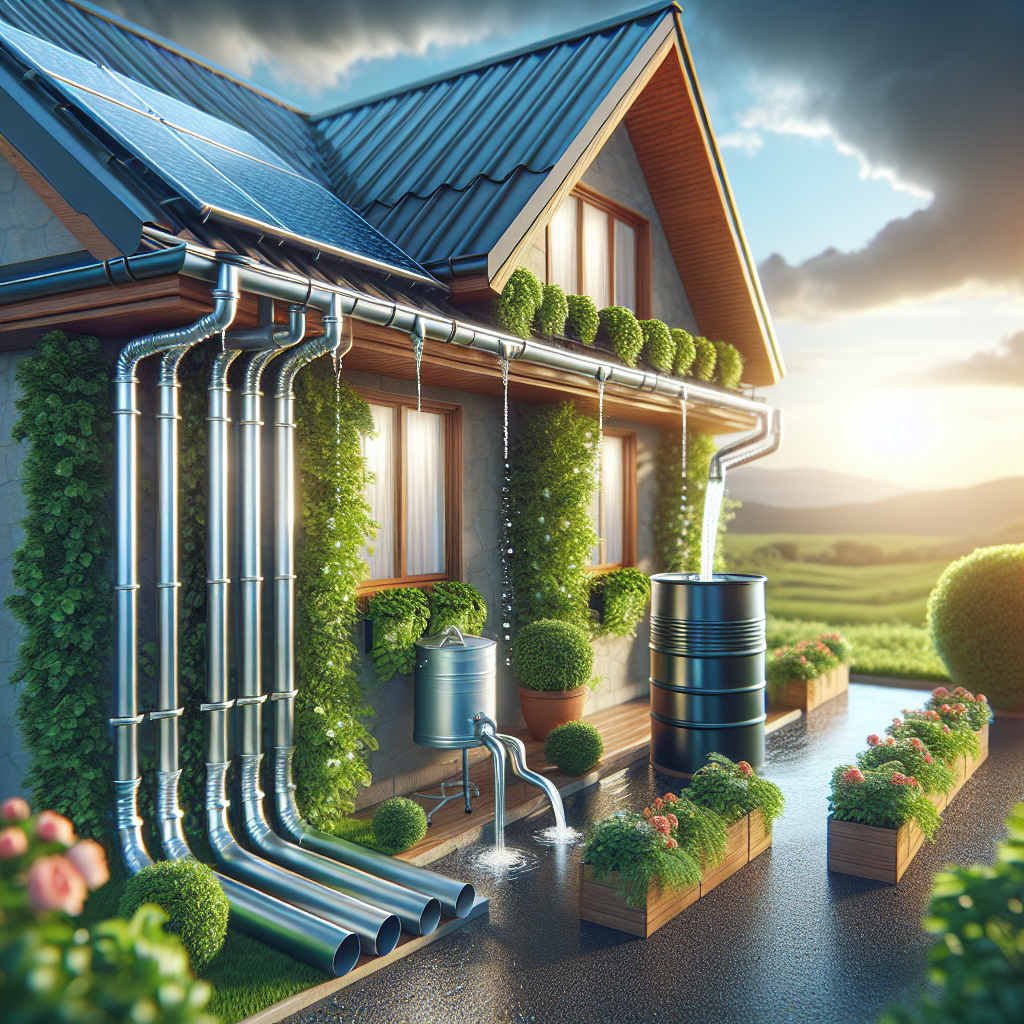Rainwater harvesting: A Step Towards Water Sustainability
In an era where water scarcity is becoming an increasingly alarming issue worldwide, rainwater harvesting emerges as a beacon of hope and a sustainable solution. It is a simple, yet profoundly effective method for individuals, communities, and industries to contribute to water sustainability. This age-old practice, which involves collecting and storing rainwater for later use, is gaining renewed interest as a viable way to mitigate the impacts of water scarcity, reduce dependence on groundwater and surface water sources, and enhance water security.
Understanding Rainwater Harvesting
Rainwater harvesting refers to the process of capturing, diverting, and storing rainwater from rooftops, land surfaces, or rock catchments. This collected water can then be used for various purposes, including gardening, irrigation, livestock, flushing toilets, and even for drinking, with proper treatment. The concept is simple yet versatile, offering a range of methods and technologies from basic barrels to sophisticated storage systems.
The Importance of Rainwater Harvesting
The significance of rainwater harvesting is multifaceted. Primarily, it serves as a critical tool in managing our water resources more sustainably. By capturing rainwater, we reduce our reliance on traditional water supplies such as rivers, lakes, and groundwater, which are becoming increasingly strained. Additionally, rainwater harvesting can help mitigate flooding and erosion by reducing the volume of runoff water. It also plays a pivotal role in replenishing groundwater levels when the collected water is directed back into the ground.
Environmental and Economic Benefits
Rainwater harvesting offers numerous environmental benefits, including minimizing the impact on natural water bodies, reducing soil erosion, and preserving aquatic ecosystems. Economically, it can lead to significant savings on water bills and reduce the demand for water treatment and supply infrastructure. For agricultural regions, it provides a reliable water source during dry spells, enhancing food security.
Implementing Rainwater Harvesting Systems
Implementing a rainwater harvesting system can vary from simple DIY projects to complex installations. Key components include catchment areas, conveyance systems, storage tanks, filters, and distribution systems. The design and complexity of a system largely depend on its intended use, the amount of rainfall, and the area available for collecting and storing water.
Challenges and Considerations
While rainwater harvesting is a promising solution, it does come with challenges. These include the initial cost of installation, potential contamination of collected water, and legal and regulatory hurdles. Moreover, the effectiveness of rainwater harvesting depends on regional rainfall patterns, which can be unpredictable due to climate change. Therefore, it’s crucial to incorporate treatment and purification systems for potable uses and to stay informed about local regulations concerning rainwater collection.
Moving Forward
For rainwater harvesting to have a meaningful impact on water sustainability, it requires widespread adoption and support from governments, communities, and individuals. Education and awareness about its benefits, coupled with incentives and support for installation, can accelerate its implementation. Moreover, integrating rainwater harvesting into urban planning and building codes can ensure that new developments are part of the solution to water scarcity.
FAQs on Rainwater Harvesting
Q: Is rainwater safe to drink?
A: Rainwater can be safe to drink if properly collected, stored, and treated to remove contaminants. However, it’s essential to test the water regularly and ensure that the system is well-maintained.
Q: How much rainwater can I collect?
A: The amount of rainwater you can collect depends on the catchment area’s size and the local rainfall. A simple formula to estimate collection is: Catchment area (sq ft) × Rainfall (in) × 0.623 = Gallons of water collected.
Q: Can I use rainwater for all my water needs?
A: While rainwater can significantly supplement your water needs, depending on your location and the size of your system, it may not fully replace your reliance on traditional water sources, especially for drinking and household use without proper treatment.
Q: Are there any legal restrictions on rainwater harvesting?
A: Legal restrictions vary by region. Some areas encourage rainwater harvesting, while others may have specific requirements or restrictions. It’s important to check local regulations before implementing a rainwater harvesting system.
Q: What maintenance is required for a rainwater harvesting system?
A: Regular maintenance includes cleaning gutters, inspecting and cleaning filters, ensuring the storage tank is secure and free from contaminants, and testing water quality if used for potable purposes.
In conclusion, rainwater harvesting stands out as a sustainable and effective solution to counter water scarcity and promote water sustainability. By adopting and promoting rainwater harvesting practices, we can take significant strides towards securing our water future, protecting our environment, and building a more resilient society against the challenges of water scarcity and climate change.

